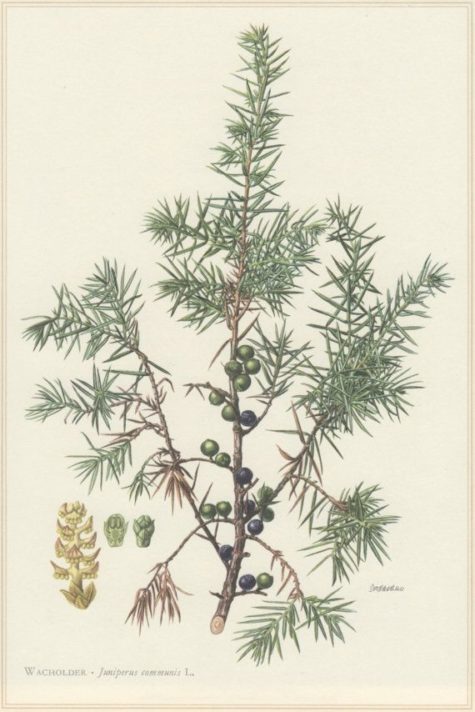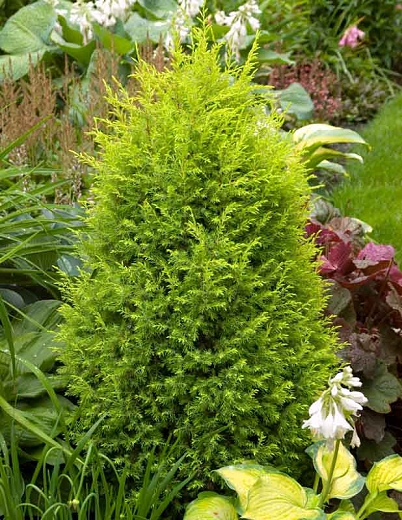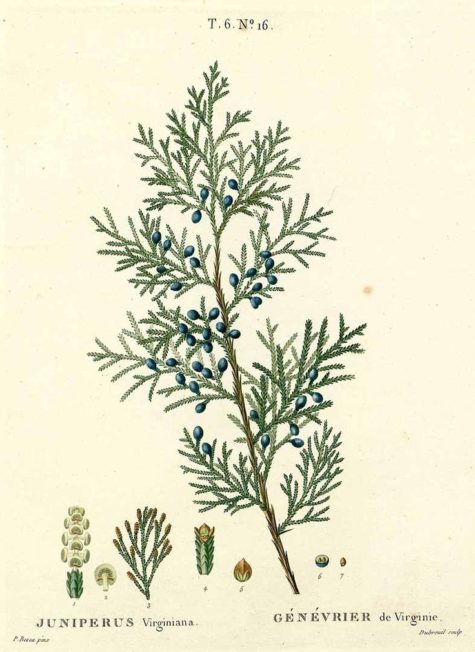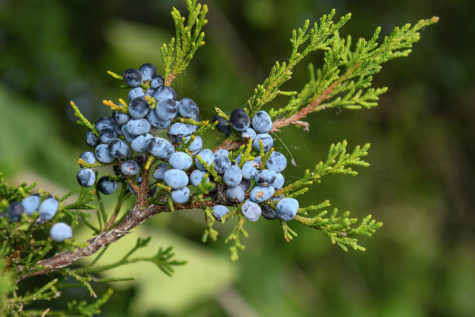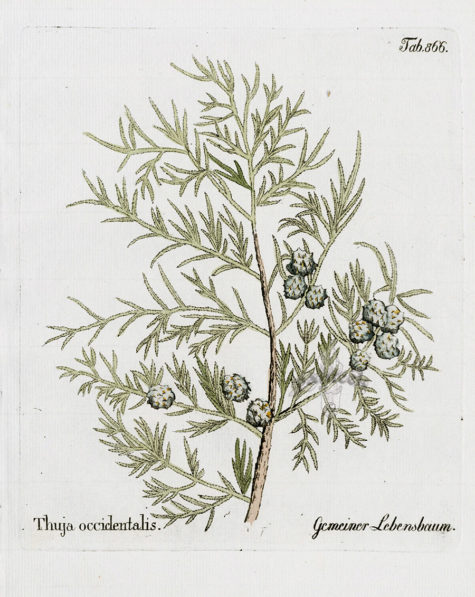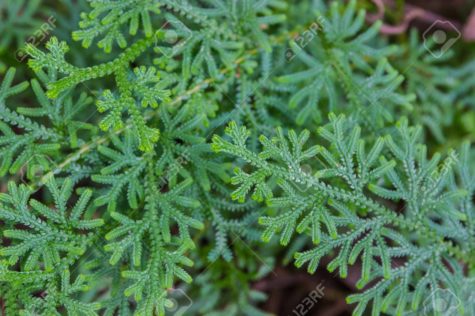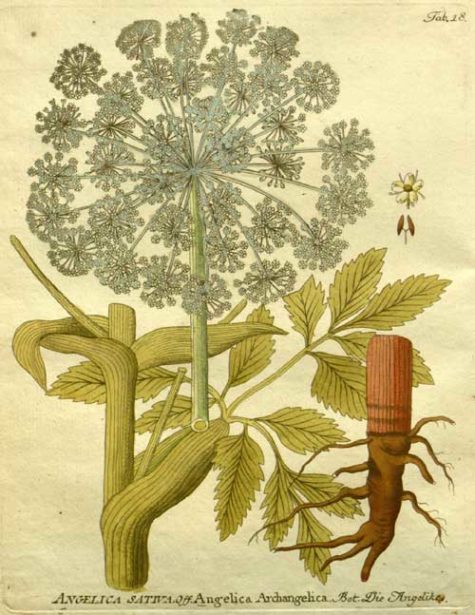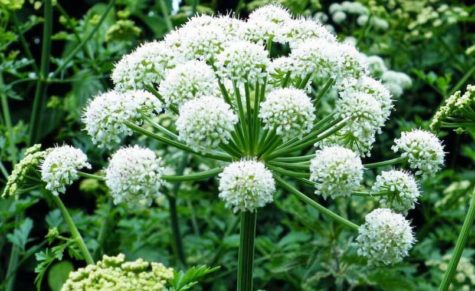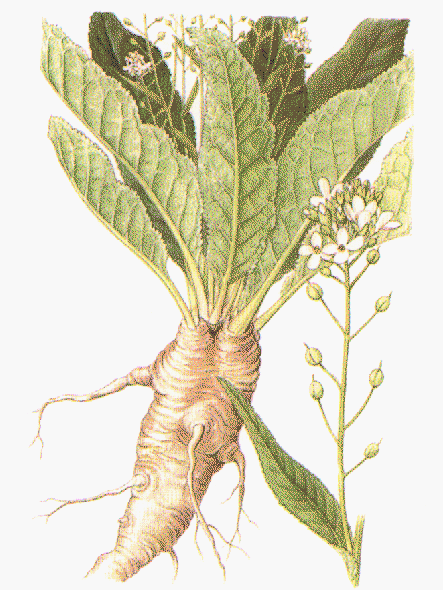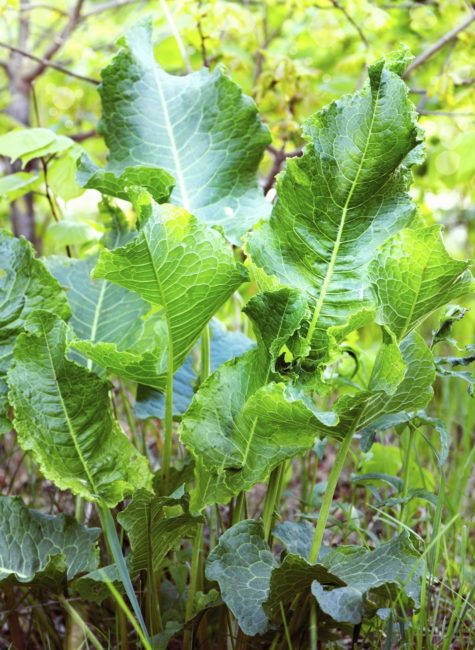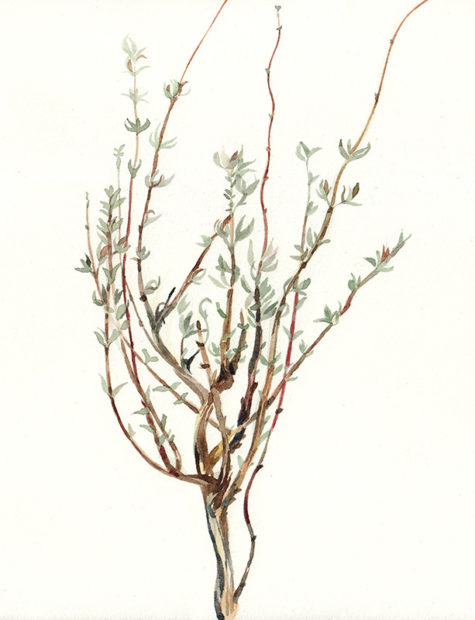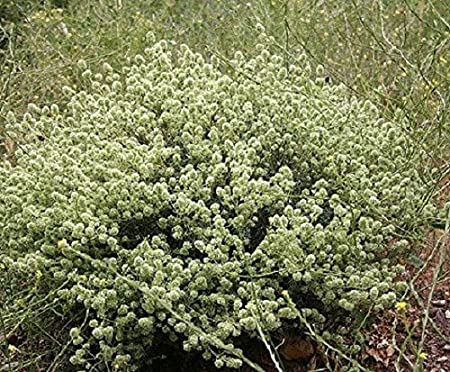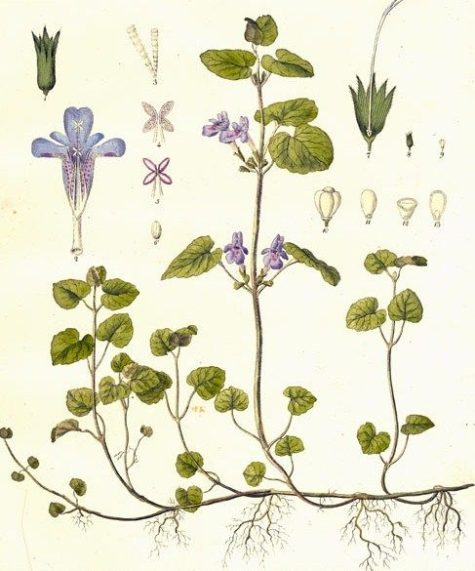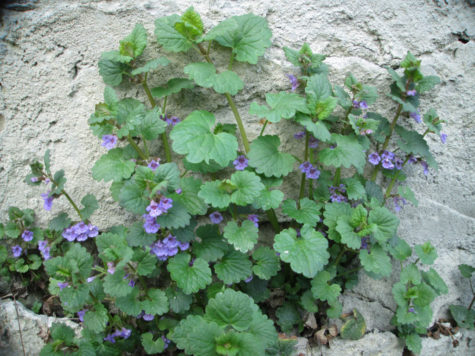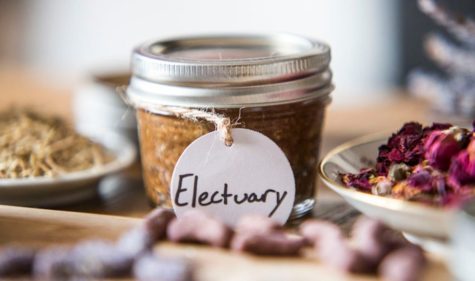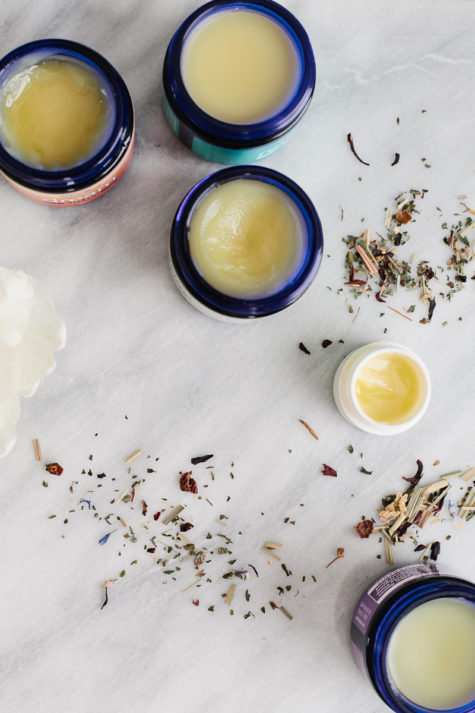Monthly Archives: May 2020
Juniper
- Scientific Name: Juniperus, communis
- Plant Family: Pinaceae
- Parts Used: Berries, leaves and twigs, bark
- Constituents: Rich in essential oil which contains monoterpenes and sesquiterpenes, invert sugar, flavone glyosides, resin, tannin, organic acids
- Actions: Diuretic, Stimulant, Carminative, Emmenagogue, Antimicrobial, Anti-rheumatic, Abortifacient
- How does it work? Juniper berries contain chemicals that might decrease swelling. It might also be effective in fighting bacteria and viruses. Juniper might also increase the need to urinate.
Varieties:
There are over sixty Juniper species, but the one which yields edible fruits in Britain is Juniperus comunis. In the Americas, Eastern Red Cedar, Juniperus virginiana, can be used in much the same way. A detailed account of the herbal properties of Eastern Red Cedar can be found here.
Among the varied forms, there are dense, columnar trees; medium sized, rounded shrubs; irregular bush forms; and creeping prostrate types. Irish and Swedish junipers are tall, narrow, and quick growing; the Greek and Chinese are very compact, slow growing. Pfitzers are irregular, massive types. California Juniper may reach heights of 40 feet, and shore Juniper and japonica are spreading ground covers.
Notes and Cautions:
One useful guide to the identification of Juniper is the apple-like fragrance that the needle-shaped leaves give off when crushed.
Women who are pregnant, wish to become pregnant, or who are nursing a child should not eat Juniper fruits. Due to their action on the kidneys, Juniper berries should be avoided by persons with kidney disease.
Don’t confuse Juniper berry oil with cade oil, which is distilled from Juniper wood (Juniperus oxycedrus).
The Basics:
A strong aromatic scent emanates from all parts of the shrub. Berries taste slightly bitter-sweet, fragrant, and spicy and are generally used to make a tea that is good for flatulence and indigestion, to promote the flow of urine.
Juniper branches can be used as a fumigant and were commonly burned in public places in times of plague and pestilence. This was still the practice in French hospitals a century ago during the smallpox epidemic of 1870.
Juniper berries make an excellent antiseptic in conditions such as cystitis. The essential oil present is quite stimulating to the kidney nephrons and so this herb should be avoided in kidney disease. The bitter action aids digestion and eases flatulent colic. It is used in rheumatism and arthritis. Externally it eases pain in the joints or muscles.
Some people take Juniper by mouth for problems with digestion, urinary tract infections (UTIs), and kidney and bladder stones along with many other conditions. Some people apply Juniper directly to the skin for wounds and pain in joints and muscles.
In foods, Juniper berry is often used as a condiment. The extract, oil, and berry are used as flavoring ingredients in foods and beverages. In manufacturing, Juniper extract and oil are used as fragrances in soaps and cosmetics.
The Other Cedars
Cedar is part of the English common name of many trees and other plants, particularly those of the genus Cedrus. Some botanical authorities consider Cedrus the only “true cedars”. Several species of genera Calocedrus, Thuja, and Chamaecyparis in the Pacific Northwest with similarly aromatic wood are referred to as “false cedars”.
Most often, when books on herbs talk about Cedar, they are referring to White Cedar which is also known as Arborvitae (Thuja occidentalis). But sometimes, they are referring to Eastern Red Cedar (Juniperus virginiana), and also Junipers in general. The information on Cedars in general tends to be confusing, at least to me, because the names overlap.
With this post, I hope to clear up a little bit of that confusion. You will not find a lot of medicinal information listed here, my goal was to simply to provide a small amount of clarity when it comes to references to “Cedar.”
Here is a quick list of trees and shrubs that are often referred to as Cedars:
Family Pinaceae – Cedrus, common English name cedar, a genus of coniferous trees in the plant family Pinaceae.
- Lebanon cedar (Cedrus libani) a cedar native to Lebanon, western Syria and south central Turkey. For more info see below.
- Atlas cedar (Cedrus atlantica) a cedar native to the Atlas Mountains of Morocco and Algeria.
- Deodar cedar (Cedrus deodara) a cedar native to the western Himalayas
- Cyprus cedar (Cedrus brevifolia) classified mainly to distinguish it from the Cedar of Lebanon, found in the island of Cyprus’s Cedar Valley in the Troodos Mountains
- Siberian pine (Pinus sibirica) occasionally erroneously referred to as Siberian cedar
Family Cupressaceae – The family is notable for including the largest, tallest, and stoutest individual trees in the world, and also the second longest lived species in the world:
- Atlantic white cedar or (Chamaecyparis thyoides)
- Bermuda cedar (Juniperus bermudiana) a species of juniper endemic to Bermuda
- Chilean cedar (Austrocedrus chilensis)
- Clanwilliam cedar (Widdringtonia cedarbergensis) a species of cypress endemic to the Cederberg mountains of South Africa.
- Eastern red cedar (Juniperus virginiana) a species of juniper native to eastern North America. . An in depth look can be found here: Red Cedar.
- Eastern white cedar (Thuja occidentalis). An in-depth look can be found here: Thuja aka Arborvitae.
- Incense-cedar (Calocedrus)
- Iranian cedar (Cupressus sempervirens)
- Japanese cedar (Cryptomeria japonica) known as 杉 (Sugi) in Japanese.
- Mexican white cedar (Cupressus lusitanica) a species of cypress native to Mexico and Central America.
- Mountain cedar (Juniperus ashei) an evergreen shrub native to northeastern Mexico and the south central United States.
- New Zealand cedar (Libocedrus bidwillii). For more info, see below.
- Northern white cedar (Thuja occidentalis)
- Persian cedar (Cupressus sempervirens)
- Port Orford-cedar (Chamaecyparis lawsoniana)
- Prickly cedar (Juniperus oxycedrus) native across the Mediterranean region. For more info, see below.
- Sharp cedar (Juniperus oxycedrus) native across the Mediterranean region.
- Western red cedar (Thuja plicata) a cypress of the Pacific northwest. For more info, see below.
- Yellow cedar (Cupressus nootkatensis) also called Alaska cedar and (Callitropsis nootkatensis)
Family Meliaceae – the mahogany family, is a flowering plant family of mostly trees and shrubs (and a few herbaceous plants, mangroves) in the order Sapindales.
- Spanish cedar (Cedrela odorata). For more info, see below.
- Cigar-box cedar (Cedrela)
- Australian red cedar (Toona ciliata or T. australis)
- Ceylon cedar (Melia azedarach) a species of deciduous tree native to India, southern China and Australia
Other families:
- Bay cedar (Suriana, Surianaceae)
- Running cedar or ground cedar, various species of clubmosses (Lycopodiopsida) in the genus Diphasiastrum
- Saltcedar, Tamarix (Caryophyllaceae)
- Stinking cedar (Torreya taxifolia, Cephalotaxaceae)
- Warren River cedar or native cedar (Taxandria juniperina, Myrtaceae)
- White cedar or Haitian cedar (Tabebuia heterophylla, Bignoniaceae). See below for more info.
From M. Grieve’s Modern Herbal we have these short and somewhat unsatisfactory descriptions of some of the other cedars, including a few of those listed above. I have also included information found on Wikipedia and elsewhere. Continue reading
Eastern Red Cedar
- Scientific Name: Juniperus virginiana
- Parts Used: Berries (female cones), branches, leaves, bark
- Actions: Anti-inflammatory, Diaphoretic, Expectorant, Astringent, Antimicrobial, Diuretic, Antiasthmatic, Antifungal
The uses of Eastern Red Cedar branch out into many. They are very similar to the Old World, standard Common Juniper in that its female cones- or berries- are one of its favored usable parts, if not an attribute of the plant that really grabs the eye. When you see the Cedar’s fragrant branches heavily-laden with these bright blue little “fruits,” it’s hard for an herbalist to think that these are NOT somehow useful!
One of the virtues of the berry is that it goes impeccably well with several mediums: salve, tincture, elixir, syrup, you name it. What more: it tastes delicious, and mixes well with a large variety of other herbal flavors in combination, if you are crafting a blend or formula of sorts. The twigs, leaves, branches and bark of Cedar have effects and flavor too, although they are notably more intense and astringent, having a reputation of being hard to extract; their use is important, but not as eclectic.
I would wager that the berries are more for tonic use, whereas the rest of this beautiful plant should be saved for acute situations, which I will get to later. Berries can be picked during the fall or winter, as they last, when they “ripen” to an appetizing-looking blue.
Remember: Cedar trees tend to be dioecious (at least the Eastern Reds are). That is, there are males and females of the species. If it is fall or winter, and the trees you are looking at for harvesting don’t seem to have blue cones, chances are they are male. Keep looking– you will more than likely stumble upon a female tree not far off.
In its many mediums, the berries serve as a very ideal winter medicine– all the better since they can, for the most part, be harvested all winter as the berries are available. They are high in Ascorbic Acid, or Vitamin C, an ideal vitamin to take over the winter for immune support. Even if you don’t have a cold, their use as a tonic will be more than welcome.
When winter illnesses take a nasty turn, Eastern Red Cedar berries work with expectorant action, helping the lungs clear out excess mucus and promote a healthy cough. It can be useful for a dry or wet cough: it relieves that “tickle” you may feel with a scratchy, dry throat with a hoarse cough, but it also stimulates the lungs to cough more productively, and expel phlegm in less time than without it. So here you have a medicine that stimulates the immune system, relieves a scratchy throat, improves your cough– and tastes great!
Cedar berries in syrup form are especially delightful. Sounds like quite a valuable ally to have, if you ask me.
Medicinal Uses
The young leafy twigs of the red cedar were officially listed in the U.S. Pharmacopoeia from 1820 to 1894 as a diuretic. The distilled oil of the red cedar has been officially listed as a reagent in the U.S. Pharmacopoeia since 1916.
The berries in decoction are diaphoretic and emmenagogue, like those of Common Juniper, and the leaves have diuretic properties.
People take Eastern red cedar for cough, bronchitis, joint pain (rheumatism), water retention, and flatulence. They also take it to improve appetite and digestion, and as a treatment for fungal infections and worms.
People apply Eastern red cedar to the skin for wounds, skin rashes, hair loss, eczema, acne, warts, fungal skin infections, and hemorrhoids. They also rub it onto joints for rheumatism, and onto the chest for asthma.
In the Native-Hispanic tradition, Cedars and their relatives are valued highly for the properties of their leaves, “needles,” or branches. These hold the more potent effects of the tree, and as such, are more difficult to capture in preparations. They can be slightly toxic.
The berries are used when there are excess fluids in the body, but Juniper really shines when the kidneys are sluggish, dilating tissues to increase urine flow, and reducing excess mucus production. It’s diuretic actions are truly remarkable, and is indicated in many cases of edema. Those berries are irritating, though, and are not recommended in large doses, for long-term use, and definitely not for those with kidney problems.
Eating 3-5 fresh berries is suggested for an upset stomach. It is thought the bitter nature stimulates gastric juices and improves digestion.
While certainly not widely considered poisonous or dangerous, it is still good to be careful. Be sparing when using preparations of Cedar needles or branches, even the berries, for that matter. Cedars are very powerful diuretics. When taken overboard, they cause kidney irritation, which feels like cramping in the abdomen– similar to a period cramp. Even higher doses can be more dangerous. Folks with weak kidneys, or outstanding kidney issues should avoid using the Cedar leaf.
Thuja aka Arborvitae
- Parts Used: Young twigs
- Constituents: 1% volatile oil including thujone, flavonoid glyoside, musilage, tannin.
- Actions: Expectorant, Stimulant to smooth muscles, Diuretic, Astringent, Alterative, Anthelmintic, Diaphoretic, Emmenagogue
- Cautions: Avoid during pregnancy. Taken in excess the essential oil can produce unpleasant results; it was officially listed as an abortifacient and convulsant in overdose.
Thuja is a genus of coniferous trees in the Cupressaceae (cypress family). There are five species in the genus, two native to North America and three native to eastern Asia.
- White Cedar – Thuja occidentalis
- Western Red Cedar – Thuja plicata
- Korean Thuja – Thuja koraiensis
- Japanese Thuja – Thuja standishii
- Sichuan Thuja – Thuja sutchuenensis
Members are commonly known as arborvitaes, (from Latin for tree of life) Thujas or Cedars. The name Thuja is a latinized form of a Greek word meaning ‘to fumigate,’ or thuo (‘to sacrifice’), for the fragrant wood was burnt by the ancients with sacrifices. The tree was described as ‘arbor vita ‘ by Clusius, who saw it in the royal garden of Fontainebleau after its importation from Canada.
The Basics
Most of the herbal information I found on Thuja refers specifically to Thuja occidentalis – White Cedar, or Arborvitae – but it is possible that the other varieties share similar characteristics and qualities.
- It is important not to confuse the Western Red Cedar (Thuja plicata) with the Eastern Red Cedar (Juniperus virginiana) as the two are quite different.
The name arborvitae is particularly used in the horticultural trade in the United States. It is Latin for “tree of life” – due to the medicinal properties of the sap, bark, and twigs. Despite its common names, it is not a true cedar in the genus Cedrus, nor is it related to the Australian white cedar, Melia azedarach.
Thuja is used for respiratory tract infections such as bronchitis, bacterial skin infections, and cold sores. It is also used for painful conditions including osteoarthritis and a nerve disorder that affects the face called trigeminal neuralgia.
Some people use Thuja to loosen phlegm (as an expectorant), to boost the immune system (as an immunostimulant), and to increase urine flow (as a diuretic). It has also been used to cause abortions.
Thuja is sometimes applied directly to the skin for joint pain, ostearthritis, and muscle pain. Thuja oil is also used for skin diseases, warts, and cancer; and as an insect repellent.
In foods and beverages, Thuja is used as a flavoring agent. In manufacturing, Thuja is used as a fragrance in cosmetics and soaps.
According to WebMD, Thuja contains chemicals that might fight viruses. It also contains a chemical called thujone that can cause brain problems.
Angelica
- Scientific Name: Angelica archangelica
- Plant Family: Umbelliferae
- Parts Used: Root, seed, stems
- Actions: Alterative, Antimicrobial, Aromatic, Bitter, Carminative, Circulatory Stimulant, Diaphoretic, Diffusive, Emmenagogue, Expectorant, Grounding, Nervine
Notes: Angelica archangelica is not the same plant as Chinese Angelica (A. sinesis), often referred to as dong quai or dang gui. There are about 30 varieties of Angelica, but Angelica archangelica is the only one officially employed in medicine.
Cautions: Use care when wildcrafting, as it resembles both Queen Anne’s Lace (a benign wild carrot) and Water Hemlock (a poisonous plant).
The Basics:
Angelica is a stunning white flower that looks like a white starburst exploding across the green hillsides. One of Iceland’s most cherished herbs, it is not only beautiful, but also appreciated as a nutritious food, a liqueur and an herbal remedy. The roots and stems can be boiled or pickled and are considered a delicacy in all of Scandinavia. The stems were used to make a musical flute, as well as flavor reindeer milk or be crystallized in sugar for desserts.
Angelica is a veritable giant in the herb world. The towering plant is widely traveled and has a background rich in herbal lore. Use has been made of leaves, stems, roots, and seeds in cooking and in medicine.
Angelica is used for heartburn (dyspepsia), intestinal gas (flatulence), loss of appetite (anorexia), overnight urination (nocturia), arthritis, stroke, dementia, circulation problems, “runny nose” (respiratory catarrh), nervousness and anxiety, fever, plague, and trouble sleeping (insomnia).
According to WebMD, Angelica contains chemicals that might kill cancer cells and fungus, reduce anxiety, and settle the stomach.
Some women use Angelica to start their menstrual periods. Sometimes this is done in hopes of causing an abortion. Angelica is also used to increase urine production, improve sex drive, stimulate the production and secretion of phlegm, and kill germs.
Some people apply Angelica directly to the skin for nerve pain (neuralgia), joint pain (rheumatism), and skin disorders. In combination with other herbs, Angelica is also applied to the skin for treating premature ejaculation.
Angelica is also used as a smell in aromatherapy to reduce symptoms associated with quitting tobacco (nicotine withdrawal).
It should be noted that Angelica has a tendency to increase the sugar in the urine, so those with a tendency to diabetes should avoid it.
A strong volatile oil is present in all parts of the plant, but especially in the root, and Angelica is effective as a general tonic. Eating Angelica stalks is said to relieve flatulence and soothe “a feeble stomach.”
Drinking Angelica tea is said to promote urine and perspiration. It is also reputed to cause a strong dislike for alcohol and is sometimes used as a treatment for alcoholics.
Strain the tea to make a cool bath for tired eyes or a wash to cleanse the skin. The scented leaves are an ingredient in potpourri. Bees and wasps are attracted by the abundant nectar on Angelica flowers.
Continue reading
Horseradish
- Scientific name: Armoracia rusticana
- Family: Cruciferae
- Parts Used: Tap root, leaves (occasionally)
- Actions: Stimulant, Carminative, Rubefacient, mild Laxative, Diuretic, Hepatic, Vermicide
The Egyptians knew about horseradish as far back as 1500 B.C. Early Greeks used it as a rub for lower back pain and an aphrodisiac. Jews still use it during Passover seders as one of the bitter herbs. Some used horseradish syrup as an expectorant cough medicine; others were convinced it cured everything from rheumatism to tuberculosis. Legend has it the Delphic oracle told Apollo, “The radish is worth its weight in lead, the beet its weight in silver, the horseradish its weight in gold.”
Horseradish is an old household remedy useful wherever a stimulating herb is called for. It can be used in influenza and fevers as a rough equivalent to Cayenne Pepper. It stimulates the digestive process whilst easing wind and griping pains. It has been used in cases of urinary infection. Externally it has a stimulating action similar to Mustard Seed. It can be used for rheumatism and as a poultice in bronchitis.
Fresh horseradish root contains calcium, magnesium, sodium, vitamin C, and has antibiotic qualities. According to WebMD, Horseradish might help fight bacteria and stop spasms.
A tea or decoction of horseradish is antiseptic, stimulant, laxative and strongly diuretic, but as it becomes a purgative when taken in large doses it is best to be cautious. It is often best used when applied externally. Apply grated fresh root to aching joints and chilblains, or infuse it in milk as a skin tonic. Traditionally taken to expel worms, horseradish has only been used as a food during the last two or three hundred years.
This plant has been in cultivation from the earliest times, but its exact place of origin seems to be obscure. It is probably the plant mentioned by Pliny under the name of Amoracia, and recommended by him for its medicinal qualities, being then apparently employed exclusively in physic, not as food or condiment. Both the root and the leaves of Horseradish were universally used as a medicine during the middle ages.
Description
Horseradish is a perennial with large, narrow, sometimes deeply cut leaves and a thick, tapering, fleshy root. In temperate climates long, loose panicles of white, four-petaled flowers occasionally appear in midsummer, but the seeds seldom ripen.
Mastic Thyme aka Spanish Marjoram
- Scientific Name: Thymus mastichina
- Common Name: Spanish Marjoram
- Plant Family: Lamiaceae or Labiatae
- Parts Used: Leaves, Flowers, Essential Oil
- Actions: Antiseptic, Deodorant, Disinfectant, Analgesic, Anti-inflammatory, Antibacterial
General Overview
Thymus mastichina is a very special thyme, native in the mountains of the Iberian Peninsula, Central Spain and Portugal. It is known by a number of different common names including Spanish Marjoram, Spanish Wood Marjoram, White Thyme, Wild Marjoram or Mastic Thyme. The leaves, and especially the essential oil contained in them, are strongly antiseptic, deodorant and disinfectant.
Thymus mastichina should not be confused with Marjoram also known as sweet Marjoram, knotted Marjoram and previously classed as Marjorana hortensis (Origanum majorana). Nor should it be confused with the Mastic Tree (Pistacia lentiscus).
As the name implies it grows primarily in Spain. Thymus mastichina produces tiny, oval-shaped, green leaves, which have an intense flavor. In its Spanish homeland it is used as a culinary herb for meat dishes, stews and sauces and because of its strong aroma has been commonly used in Andalucía to season and preserve olives.
Despite this fact, it is prized more for its essential oils than for its herbal properties. The plant has an herbaceous scent with eucalyptus-like overtones with a hint of a vanilla note, which, in aromatherapy, is used for its soothing, relaxing effect. It’s oil is pale orange to amber in color and has a distinctive eucalyptus like aroma. It is also considered to be especially beneficial in relaxing muscles.
Used fresh or in dried form, its leaves are used to make an herbal tea that is considered useful in treating sore throats, catarrh and colds. If preferred, the tea can be used to gargle with rather than ingested. Infusions are attributed curative or palliative properties of arthritis and rheumatism. Mastic Thyme, may be effective in protecting against colon cancer.
The Basics
The species name mastichina and the common name of Mastic Thyme derive from the Greek word massein, meaning ‘to chew’, or the verb mastichein meaning ‘to gnash the teeth’. It is the origin of the English word masticate.
Interestingly, the Mastic Tree is a small Mediterranean evergreen tree (Pistacia lentiscus) of the cashew family. The tree produces an aromatic, ivory-coloured resin, also known as mastic, is harvested as a spice from the cultivated mastic trees grown in the south of the Greek island of Chios in the Aegean Sea. Mastic resin is a relatively expensive kind of spice that has been used principally as a chewing gum. The flavor can be described as a strong, slightly smoky, resiny aroma.
Mastic Thyme produces tiny, oval-shaped, green leaves, which have an intense flavor. In its Spanish homeland it is used as a culinary herb for meat dishes, stews and sauces and because of its strong aroma has been commonly used in Andalucía to season and preserve olives.
Despite this fact, it is prized more for its essential oils than for its herbal properties. The plant has an herbaceous scent with eucalyptus-like overtones with a hint of a vanilla note, which, in aromatherapy, is used for its soothing, relaxing effect. It is also considered to be especially beneficial in relaxing muscles. The essential oil is most often found under the name: Spanish Marjoram.
Used fresh or in dried form, its leaves are used to make an herbal tea that is considered useful in treating sore throats, catarrh and colds. If preferred, the tea can be used to gargle with rather than ingested. Infusions are attributed curative or palliative properties of arthritis and rheumatism.
The leaves are used as a seasoning. They have a pungent eucalyptus-like aroma. If the leaves are to be dried, the plants should be harvested in early and late summer just before the flowers open and the leaves should be dried quickly. The plant is also the source of an essential oil, called “oil of marjoram” or “Spanish Marjoram”, that is used extensively as a flavoring for soups etc.
The essential oil obtained from the leaves is also used in perfumery, as a mouth wash, medicinally etc.
Ground Ivy
- Scientific Name: Glechoma hederacea
- Plant Family: Lamiaceae
- Parts Used: Leaves, stems, and flowers
- Actions: Expectorant, Astringent, Diuretic, Tonic, a gentle Stimulant, Anti-catarrhal, Vulnerary
General Overview:
Ground Ivy is an aromatic, perennial, evergreen creeper of the mint family. This little plant grows on waste ground and in hedgerows everywhere, the leaves are dark and kidney shaped and the flowers bright dark blue. The Romanies made a tea from Ground Ivy flowers and wood sage as a cure for fevers and colds. The herb is used by herbalists in the treatment of blood and kidney disorders.
The leaves are downy, dark green and kidney-shaped, with glands that contain an aromatic, bitter oil. The tiny deep-throated flowers are purple or blue.
Some people consider Ground Ivy to be an attractive garden plant, and it is grown in pots and occasionally as a groundcover. Easily cultivated, it grows well in shaded places. A variegated variety is commercially available; in many areas this is the dominant form which has escaped cultivation and become established as an aggressive, adventitious groundcover.
Note:
Ground Ivy is sometimes confused with common mallow (Malva neglecta), which also has round, lobed leaves; but mallow leaves are attached to the stem at the back of a rounded leaf, where Ground Ivy has square stems and leaves which are attached in the center of the leaf, more prominent rounded lobes on their edges, attach to the stems in an opposite arrangement, and have a hairy upper surface.
In addition, mallow and other creeping plants sometimes confused with Ground Ivy do not spread from nodes on stems. In addition, Ground Ivy emits a distinctive odor when damaged, being a member of the mint family.
The Basics:
Ground Ivy has been used in the traditional medicine of Europe going back thousands of years: Galen recommends the plant to treat inflammation of the eyes. John Gerard, an English herbalist, recommended it to treat tinnitus, as well as a “diuretic, astringent, tonic and gentle stimulant. Useful in kidney diseases and for indigestion.” It has also been used as a “lung herb.”
Its presence as an invasive weed in North America is the result of the value placed on it by European settlers as a medicinal herb and ale preservative; the species was imported and widely cultivated in herb and kitchen gardens.
Other traditional uses include as an expectorant, astringent, and to treat bronchitis. In the traditional Austrian medicine the herb has been prescribed for internal application as salad or tea for the treatment of a variety of different conditions including disorders associated with the liver and bile, gastrointestinal tract, respiratory tract, kidneys and urinary tract, fever, and flu.
An ancient ale herb, bitter Ground Ivy was used to clear and flavor ale before the introduction of hops.
Continue reading
Making Honey Powder Pastes
Aside from capsules, there are other ways to take powdered herbs. A honey powder paste, or electuary, is a particularly nice way to take them, and it preserves the herb material very well, too.
Administration and Dosage Guidelines
You can stir the honey powder paste into tea or hot cereal, or just eat it off the spoon. For medicinal effects, take 1 to 3 teaspoons 2 or 3 times per day.
Shelf Life and Storage Guidelines
You can store honey powder paste in a glass jar for a year or more. As with other herbal medicines, it is best to keep it away from heat and light.
Necessary Tools, Equipment, or Ingredients
- Powdered herbs
- Honey
- Small, wide-mouth jars
- Small pot
- Water
- Stove or hot plate
- Labels
Preparing Remedies – Step by Step
Use a ratio of 1 part powdered herbs to 5 parts honey. For example 2 1/2 tablespoons powdered herbs to 3/4 cup honey. You can grind your own, but store-bought powdered herbs will make for a less gritty and smoother texture.
Measure the honey and place it in a jar. It’s best to use a squat, wide-mouth jar as this will also be the container for your finished honey powder paste.
Warm the honey gently by placing the jar in a small pot of hot (not boiling) water on the stove or on a hot plate. Do not let water get into the jar – keep the water level in the pot 1 to 2 inches below the jar’s mouth.
As the honey warms, it will transition suddenly to a thin, watery consistency. When this happens, remove it from the heat and stir the powdered herbs into the honey.
Stir very, very well, making sure to break up any clumps of powder. Continue stirring for a few more minutes after you think it’s all stirred in, so it will not separate or clump up. The paste will thicken as it cools and even more over time.
Close the jar and label it with the ingredients used and the date it was made.
Pros
- Long shelf life. When suspended in honey, the herb material is protected from oxidation and breakdown. Even powdered herbs will maintain their potency for years when they’re preserved in honey.
- Full spectrum. With any powder-based preparation, you get all the water, alcohol, and fat soluble constituents the herb has to offer.
- Delicious. While some don’t like the grittiness of honey paste, the sweetness is very popular.
Cons
- Sweet means sugar. Herbal honey powder pastes are not ideal for those with insulin resistance, diabetes, or other blood sugar regulation problems.
- Gritty. Especially if you grind your own herbs at home, your paste may have a gritty texture that some don’t enjoy. Commercially made herbal powders are much finer and more consistent in texture, and yield a smoother paste.
Additional Considerations
In the Ayurveda medical tradition of India, it’s common to make a similar preparation using ghee (clarified butter). It’s not as sweet, but it can be employed in the same way as a honey powder paste.
Source: Herbal Medicine for Beginners
How To Make A Healing Lotion
Lotions are what you get when oil and water mix. The trick is finding a way to keep them in suspension. Most instructions for making lotions call for water and herb-infused oils, but this yields a very thin, runny lotion that is more likely to separate. Working with salves instead of oils makes a thicker lotion ore likely to stay mixed.
If you prefer thick lotions, use salve. If you prefer thin lotions, use oil. If you prefer something in between, use half salve and half oil.
Administration and Dosage Guidelines
Lotions are used topically for dry conditions, such as eczema and dermatitis. You can use them any time as part of your daily skin care routine. Lotions are excellent for later-stage healing of burns.
Apply lotions frequently for best results – 2 to 4 times daily, depending on the issue.
Shelf Life and Storage Guidelines
Lotions should be used within 1 to 3 months. If you live in a warm climate, keep them refrigerated.
Necessary tools, Equipment, or Ingredients
- Rose water, water-based witch hazel extract, tea, or water
- Herbal salve or herb-infused oil
- Blender
- Storage container
- Labels
Preparing Remedies – Step by Step
In order to make a lotion, you will first need an herbal salve or herb infused oil. Instructions for how to make these can be found here:
Make sure all your ingredients are at room temperature. If any are warmer or cooler than the others, they may not emulsify.
Measure equal amounts of salve and water (plain water, tea, rose water, water-based witch hazel extract, etc). Use no more than 1 cup each. Most blenders can handle no more than 1 1/2 to 2 cups of lotion.
Put the water in the blender and blend for 1 to 2 minutes until frothy.
Use a fork to stir the salve to soften it. With the blender running, slowly add the salve, a forkful at a time. If you are using oil, slowly pour it into the blender. Continue to blend for a few minutes. It will form a suspension and your finished lotion.
Bottle the lotion. Cap the bottle and label it with all ingredients, the date it was made, and include “Shake well before each use.” If your lotion separates, shaking temporarily re-emulsifies it.
Pros
- Emollient. Soothing for dry skin conditions
- Can be applied to burns. Once the skin starts to itch, lotion can provide relief and can be made with herbs that speed new skin growth, such as calendula.
- Homemade is better. You can add any scent you like, and you know there are no preservatives or chemicals.
Cons
- Tricky to make. It may take a few tries to find the best ratio of water to salve or water to oil. If your lotion is too thick, next time add more water. If it is too thin, next time add more salve. It is okay to put a lotion back into the blender to add more water or salve/oil. Experiment until you get it the way you like it. Keep good notes so you can reproduce it next time.
- Short shelf life. Make lotion in small batches so you can use it all before it molds.
Additional Considerations
If you adjust the recipe to increase the yield, blend it in small batches so there is no more than 2 cups total in the blender at one time. Most blenders can’t emulsify more than 1 1/2 to 2 cups at a time.
Source: Herbal Medicine for Beginners
Rennie Luttrull: queen-annes-lace-seeds
Rosanna: Spignel aka Bald Money
Annamarie Squatrito: Fumitory
EILEEN Klinghagen: Pumpkin
Mahmudul Hasan: Celery
